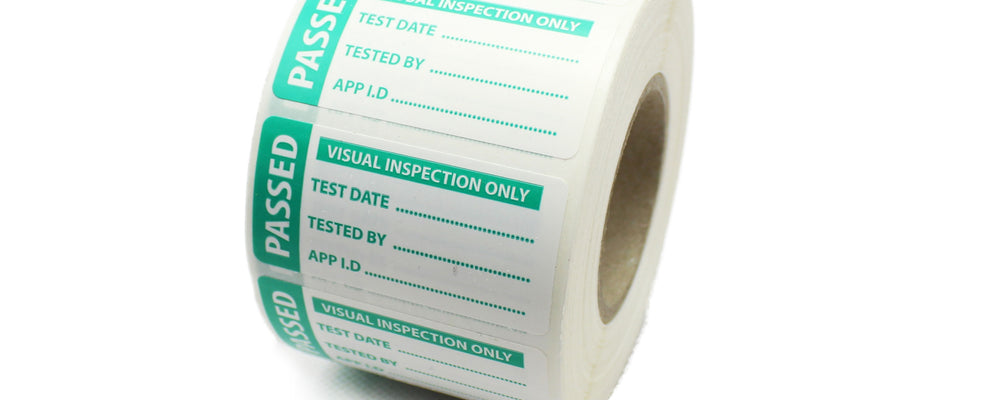Welcome to our comprehensive guide on Portable Appliance Testing (PAT) labels, a crucial aspect of ensuring electrical safety in the workplace. Whether you're a business owner, a safety officer, or simply interested in workplace safety, this blog post is designed to demystify the world of PAT testing and its labels, offering you everything you need to know to maintain compliance and promote a safe working environment. Join us as we decode the details behind PAT test labels, exploring their significance, the vital information they carry, and their role in upholding electrical safety standards.
In today's fast-paced work environments, electrical safety is paramount. Portable Appliance Testing (PAT) emerges as a critical practice to ensure that all electrical equipment in the workplace operates safely, reducing the risk of accidents and compliance issues. At the heart of this process are PAT test labels - small but mighty indicators of an appliance's safety status. This blog aims to unfold the importance of these labels, guiding you through their purpose, what they entail, and why they're indispensable for any business striving to create a safe workplace.
What is a PAT Test Label?
A PAT test label is much more than a mere sticker on an appliance; it is a comprehensive record of the appliance's safety at the time of testing. It signifies that an electrical item has undergone thorough inspection and testing to ensure it meets the UK's stringent safety standards. These labels are affixed to appliances post-testing and carry essential information about the test results, making them an integral part of workplace safety and compliance strategies.
Components of a PAT Test Label
Each PAT test label is packed with information crucial for maintaining safety records and compliance:
- Test Date: The date when the PAT was carried out, informing you of the test's recency.
- Tester ID: Identification of the individual or company that performed the test, ensuring accountability and traceability.
- Test Result: Clearly indicates whether the appliance passed or failed the test, providing immediate insight into its safety status.
- Re-test Date: Advises when the next PAT should be conducted, helping businesses plan their testing schedule to ensure continuous compliance.
Types of PAT Labels
Understanding the variety of PAT labels is key to interpreting the test outcomes:
- Pass Labels: Green in color, indicating that the appliance has met all the required safety standards.
- Fail Labels: Red, alerting that the appliance has failed the test and should not be used until repaired and re-tested.
- Visual Inspection Labels: Often blue, these are used when only a visual check was performed without electrical testing, applicable in certain low-risk situations.
The Importance of PAT Testing and Labeling
PAT testing, followed by the correct labeling of equipment, is not just a regulatory requirement; it's a cornerstone of workplace safety. It helps identify potential electrical faults before they lead to accidents, ensures legal compliance, and instills confidence among employees and customers alike in your commitment to safety.
Legal Requirements and Standards for PAT Testing
The UK legislation, specifically the Electricity at Work Regulations 1989, underpins the necessity for regular electrical maintenance, including PAT. While the law doesn't specify how PAT should be carried out, adherence to the Health and Safety Executive's guidelines and British Standards (BS EN 60335, for instance) is advised to meet legal obligations.
How to Read and Understand PAT Labels
Reading a PAT label is straightforward once you know what each component means. It’s crucial not just to acknowledge the presence of a label but to understand its implications—especially the re-test date—to ensure equipment is always within its safety validation period.
Maintaining Compliance: Best Practices for Businesses
To stay on top of electrical safety, businesses should:
- Develop a regular PAT schedule based on the risk assessment of different types of equipment.
- Keep detailed records of all PAT tests, including the information from the labels, to track compliance and safety over time.
- Educate employees about the importance of PAT testing and what the labels mean, promoting a culture of safety.
PAT test labels play a pivotal role in ensuring electrical safety within the workplace, serving as a visual reminder of an appliance safety status and the need for regular testing. By understanding and adhering to the requirements around PAT testing and labeling, businesses can significantly mitigate the risk of electrical hazards, ensuring a safer work environment for everyone. As we've unraveled the details behind these essential labels, it's clear that they are more than just stickers; they are a key component of a comprehensive electrical safety strategy.


